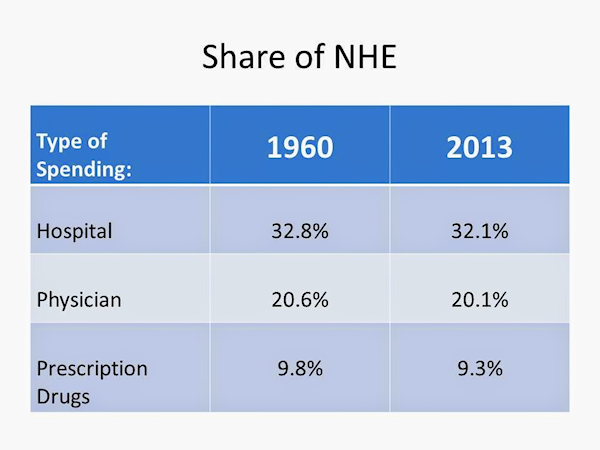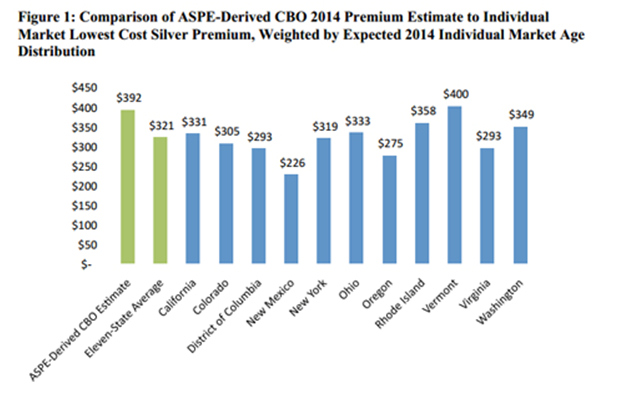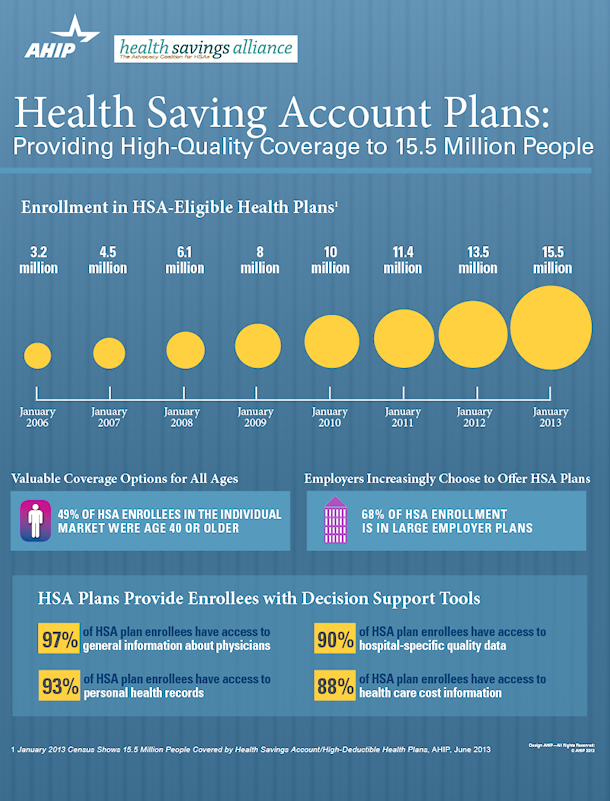What are the implications of the upward spiral occurring in the specialty drug cost trend?
By Clive Riddle, May 1, 2015
What are the implications of the upward spiral occurring in the specialty drug cost trend?" That was the question asked of experts in the current issue in MCOL’s ThoughtLeaders. A running theme in their responses was that this will further drive the value-based payment movement. Our ThoughtLeader Dr. Peter Kongstvedt also takes us a “wonk on the wild side: predicting policy implications including more legislation.
Here’s some excerpts from their responses in ThoughtLeaders:
Vicky Parikh, MD, MPH, (Executive Director, Reliance Health and Executive Director, Mid-Atlantic Medical Research Centers) frames the discussion, and points to further cost-sharing as the consequence – “Specialty drugs can cost more than $600 per treatment, $4,000 or more a month and can reach expenditures up to $100,000 a year. By 2020 the overall spending for specialty drugs could potentially reach $400 billion, or 9.1% of national health spending. In 2009, .12 cents out of every dollar spent went to specialty drugs. Now, that amount has risen to .32 cents out of every dollar. But what does the increase of prices for specialty drugs have to do with anything, when most individuals have a health plan that pay for medical expenditures? Employer based health plans could cause employees to see a change of benefits, increasing deductibles and overall shifting of the more expensive bills being passed towards the employee.”
Jeremy Nobel, MD, MPH, (Northeast Business Group on Health, Executive Director, NEBGH's Solutions & Innovations Center and Faculty, Center for Primary Care, Harvard Medical School) sees the trend hastening value-based purchasing – “The upward spiral on Specialty Pharma costs will likely accelerate the pace at which patient-centered care will reshape the healthcare marketplace from ‘volume-based’ to ‘value-based.’ Facilitated by highly personalized care coordination, back-stopped by advanced analytics, and rewarded with a host of outcomes-based payment mechanisms, providers and systems that can adjust to that ‘new normal’ will become dominant players. From a purchaser perspective, the traditional focus on reducing costs of "components of care" and managing unit price through volume discounts for everything from drugs to hospital days, to office visits and diagnostic tests, needs to move rapidly and comprehensively towards a focus on ‘total cost of care’ with a payment model that rewards cost reduction as long as quality benchmarks are maintained. And with the inevitable market entry of new medications like the PCSK9 class of drugs targeting extremely common conditions like hypercholesterolemia, the current Rx cost/value management mechanisms for Specialty Pharma will ‘fall short’ quickly.”
Cyndy Natyer, President, CyndyNayer.com and Founder/CEO of Center of Health Engagement) also looks to value – “My goal is to shift the conversation to what is the value of the drug, and if it can prevent high cost conditions from becoming higher costs, then a higher priced drug may well be worth the negotiated spend…On the other hand, some of the drugs in the specialty arena are going thru yearly increases of thousands of dollars without new technology or formulations. In this case, the price escalation without better outcomes must be considered when negotiating the price of the drugs. We are even seeing many-hundred-percent increases in some common drugs, not specialty, for common chronic illnesses, again with little or no attribution to new technology in the drugs. In each case, I'd like to think that we will not simply deny a drug to a patient because of the cost, and that we would not waste valuable time demanding that folks fail on the drugs we know will not suit them because they are cheaper.”
Constance A. Wilkinson (Member of the Firm, Epstein Becker & Green, P.C.) and Alan J. Arville (Member of the Firm, Epstein Becker & Green, P.C.) also go down the value-based path – “Manufacturers (and payors) will continue to pursue a value-based purchasing strategy, such as an outcomes-based approach, to support the value proposition of the drug. Such arrangements build in financial incentives or penalties for manufacturers that are contingent upon negotiated performance standards (typically based on quality or health outcomes). There are particular challenges in implementing this approach for federal health care program beneficiaries due to the potential implications to manufacturer drug price reporting under those programs, and the attendant financial consequences.”
Peter R. Kongstvedt, MD, FACP (Principal, P.R. Kongstvedt Company, LLC) sees policy implications - “The two most significant long-term implications of rising specialty pharmacy drug costs are to create the pressure for another round of "health reform" and on international trade policy. These are obvious choices, I know, but let's look closer and take a wonk on the wild side ("...and the wonks go doo, da-doo, da-doo, da-doo doodoo, doo, da-doo, da-doo, da-doo doodoo..." *). [* Apologies to the late and sorely missed Lou Reed.]
Peter explains that “there are really two broad types of specialty pharmacy though: manufactured drugs that are one or perhaps two molecules, regardless of how they are manufactured or delivered; and compounding pharmacy drugs. Compounding accounts for a surprising amount of the specialty pharmacy cost increase, but because it uses drugs manufactured by others, it can be managed with through tough negotiations, the use of a single compounding pharmacy, strict adherence to medical guidelines, preauthorization, a closed formulary, and benefits design. That leaves us with the manufactured molecules that have the long term implications.”
Peter sees the trend accelerating cost-sharing, which in turn will accelerate legislative reform of cost-sharing, and even pricing. “We will bypass all but one of the short term implications related to the existing approaches to managing costs such as preauthorization, drug utilization review, step therapy, formulary control and the like, as well as the counter-measures used by the manufacturers. But one of the most common approaches is increased cost-sharing, and that's the one that could get us to another round of health reform. Increased cost-sharing for specialty pharmacy is not quite the same as upping the PCP office visit copay by $10. It now often includes separate deductibles and coinsurance being applied only to specialty pharmacy coverage, which for a lot of people is both good news and bad news. The good news is that cost-sharing goes away when they hit their annual out-of-pocket maximum, which may occur in the second month of coverage; the bad news is they are slowly going bankrupt because most people don't have $6,600.00 (2015 single) / $13,200.00 (2015 Family) of spare cash every year in their savings or under the couch cushions. This brings us to Health Reform II: The Next Act…..Multiple states are now considering "cap the copay" bills that would require state licensed insurers and HMOs to markedly limit cost-sharing; for example, one Oregon bill under consideration would cap cost-sharing at $100 per month.”
Peter warns that “’Cap the copay’ and similar laws are like mowing the lawn to get rid of dandelions - it only appears to solve a problem that is actually growing. Specialty pharmacy costs, and really all healthcare costs related to pricing, in reality grow faster when richer coverage is required. Eventually those very real and ever-rising costs will force us as a society to once again grapple with national health policy about how we finance health care goods and services. Payers were first in the reform barrel. Pricing is likely to be next, though it may be confined to one sector, and specialty pharmacy or drug manufacturers overall seems to have raised its collective hand to be called on next.”
 Post a Comment By
Post a Comment By  Riddle, Clive |
Riddle, Clive |  Friday, May 1, 2015 at 08:50AM tagged
Friday, May 1, 2015 at 08:50AM tagged  Cost & Utilization|
Cost & Utilization|  Trends & Strategies
Trends & Strategies 





